History
The first recorded bridge over the Golden Horn in Istanbul was built during the reign of Justinian the Great in the 6th century, close to the area near the Theodosian Land Walls at the western end of the city.
In 1453, during the Fall of Constantinople, the Turks assembled a mobile bridge by placing their ships side by side across the water, so that their troops could move from one side of the Golden Horn to the other.
In the years 1502–1503 there were plans to construct the first bridge at the current location. Sultan Bayezid II solicited a design and Leonardo da Vinci, utilizing three well-known geometrical principles, the pressed-bow, parabolic curve and keystone arch, created an unprecedented single span 240 m long and 24 m wide bridge for the Golden Horn, which would have become the longest bridge in the world of that time if it had been constructed. However, the ambitious design was not approved by the Sultan.
A smaller scale version of Leonardo da Vinci’s Golden Horn Bridge was brought to life in 2001 near Oslo, Norway by the contemporary artist Vebjørn Sand, the first civil engineering project based on a Leonardo da Vinci sketch to be constructed. The Leonardo Bridge Project hopes to build the design as a practical footbridge around the world, including the Golden Horn in Istanbul, using local materials and collaborating with local artisans as a global public art project. The Wall Street Journal referred to the Project as a “…logo for the nations.
Another Italian artist, Michelangelo was also invited to design a bridge for Istanbul. Michelangelo rejected the proposal, and the idea of building a bridge across the Golden Horn was shelved until the 19th century.
In the early 19th century Mahmud II (1808–1839) had a bridge built a bit further up the waterway, between Azapkapı and Unkapanı. This bridge, known as the Hayratiye (Benefaction in English), was opened on September 3, 1836. The project was carried out by Deputy Lord High Admiral Fevzi Ahmet Paşa using the workers and facilities of the naval arsenal. According to the History of Lutfi, this bridge was built on linked pontoons and was around 500 to 540 m long.
The first Galata Bridge at the mouth of the waterway was constructed in 1845 by Valide Sultan, the mother of Sultan Abdülmecid (1839–1861) and used for 18 years. It was known as the Cisr-i Cedid or New Bridge to distinguish it from the earlier bridge further up the Golden Horn, which became known as the Cisr-i Atik or Old Bridge.
On the Karaköy side of the bridge, there was an inscription as a couplet by poet İbrahim Şinasi saying that the New Bridge was built by Sultan Abdülmecid I. First to pass over the bridge was Sultan Abdülmecid, and the first to pass below it was the French captain Magnan in his ship the Cygne.
The second bridge
This bridge was replaced by a second wooden bridge in 1863, built by Ethem Pertev Paşa on the orders of Sultan Abdülaziz (1861–1876) during the infrastructure improvement works prior to the visit of Napoleon III to Istanbul.
The third bridge
In 1870 a contract was signed with a French company, Forges et Chantiers de la Mediteranée for construction of a third bridge, but the outbreak of war between France and Germany delayed the project, which was given instead to a British firm G. Wells in 1872. This bridge, completed in 1875, was 480 m long and 14 m wide and rested on 24 pontoons. It was built at a cost of 105,000 gold liras. This was used until 1912, when it was pulled upstream to replace the now genuinely old Cisr-i Atik Bridge.
The fourth bridge
The fourth Galata Bridge was built in 1912 by the German firm Hüttenwerk Oberhausen AG for 350,000 gold liras. This floating bridge was 466 m long and 25 m wide. It is the bridge, still familiar to many people today, that was badly damaged in a fire in 1992 and towed up the Golden Horn to make way for the modern bridge now in use.
The fifth (current) bridge
The fifth Galata bridge was built by the Turkish construction company STFA just a few meters away from the previous bridge, between Karaköy and Eminönü, and completed in December 1994. It was designed and supervised by GAMB (Göncer Ayalp Engineering Company). It is a bascule bridge, which is 490 m long with a main span of 80 m. The deck of the bridge is 42 m wide and has three vehicular lanes and one walkway in each direction. It has also recently had tram tracks re-added to it, allowing the Istanbul Tram to run from Zeytinburnu in the suburbs near Atatürk International Airport to Kabataş, a few blocks before Dolmabahçe Palace. This bridge along with Trowse Bridge in Norwich, Erasmus Bridge in Rotterdam, a number of bridges in Saint Petersburg in Russia, a number of railway bridges in the United States may be the only movable bridges in the world that also carry electrified rail tracks.
The rest of the bridge including the market area in the first floor opened to common use in 2003.
Culture
The Galata Bridge was a symbolic link between the traditional city of Istanbul proper, site of the imperial palace and principal religious and secular institutions of the empire, and the districts of Galata, Beyoğlu, Şişli and Harbiye where a large proportion of the inhabitants were non-Muslims and where foreign merchants and diplomats lived and worked. In this respect the bridge bonded these two distinctive cultures. As Peyami Safa wrote in his novel, Fatih-Harbiye, a person who went from Fatih to Harbiye via the bridge set foot in a different civilization and different culture. Apart from its place in fiction, the romantic appearance of the Galata Bridge made it the subject of many paintings and engravings.
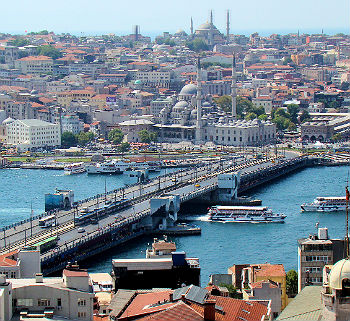
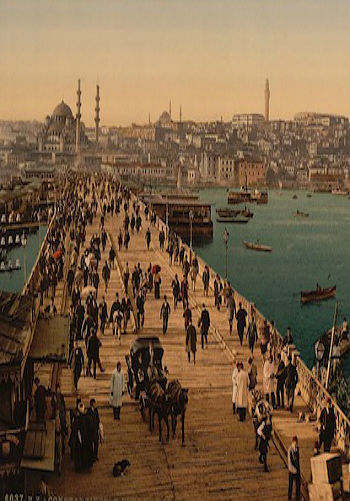
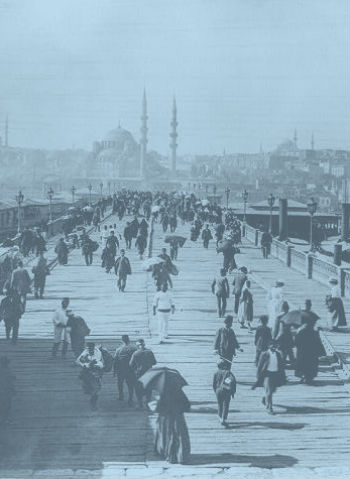
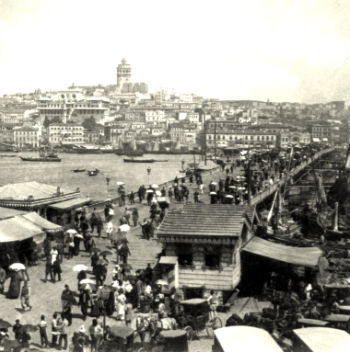
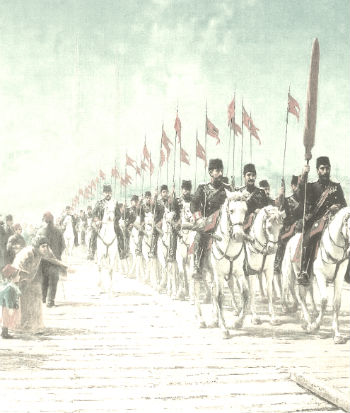
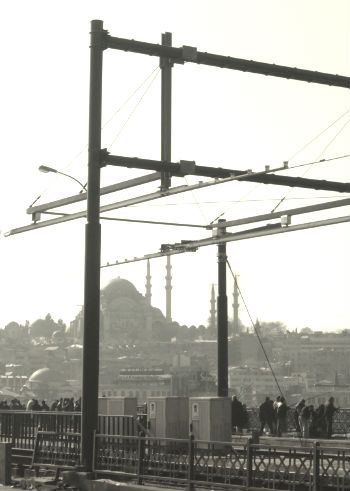
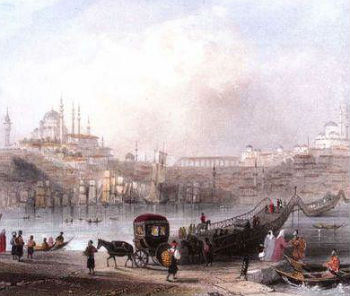


Galata Bridge might looks like other normal bridges in the world. The different is just this; it separated the Asian side of Istanbul and the European side of Istanbul. If you really want to experience the essence of Istanbulus, take a tram and stop in the middle of it and walk all the way to Eminonu. You'll see fishermen trading…
This is a must see. The bridge spans the Golden Horn. From here you can take a ferry ride on the Bosphorus; you can have a meal under the bridge; you can fish from the bridge, you can see the New Mosque from the bridge, or you can just watch the passing parade. T
Loved this area of Istanbul.
Fisherman ontop of the bridge and Fish restaurants under it. Most of the fisherman were happy to pose for my photos of them catching small sardine looking fish. A very interesting assortment of people fishing and eating. The fish sandwiches near the ferry are well worth the pittance they charge albiet the backbones are still…
Mkae sure you visit the restaurants and cafes under Galata Bridge. Most sell fish dishes, and some smell quite fishy, but others are very pleasant. It is lovely to sit in the sun, watching the ferry baost whizz past, as well as watching fish being caught by fishermen on the bridge above. In front of the private boat tour harbor,…
At about 4/5pm the restaurants under the bridge are buzzing with people having fresh 'fish in bread'. It was delicious! Not all places sell alcohol. We enjoyed ours with a cold beer after having spent a good few hours walking around. Cheap too 🙂
we walked across the bridge one morning and were amazed by the number of people fishing,,, the whole way over to the historis side was packed and only when we looked down did we see all the resturants on the lower level… yes it is noisey and smelly at times but it is alive.
Galata Bridge in Istanbul,Turkey is a bridge with an excellent view to Golden Horn and a historical background.It is a very good place for walking and enjoying fresh air.I recommend to eat seafood in one of the various restaurants around and under the bridge.
Its a place in Istanbul that you shouldn't miss it.
You can have the best fish sandwich and enjoy breeze and beautiful sunshine on the daytime and have a good view of the colourful light on the hill. We have passed it several times and it was always fun.
After a four days of conference at the Barcelo Saray Hotel (great hotel), I had an extra morning to explore the city and take some photos with my new Canon.
I had read that there were some amazing views from the Galata Bridge, and there certainly were. In addition to some beautiful vies of the Galata Tower.
Nice collection of restaurants on the lower level and an array of fishermen everywhere. It is a nice walk over the bridge if you can tolerate the smell from the fish.